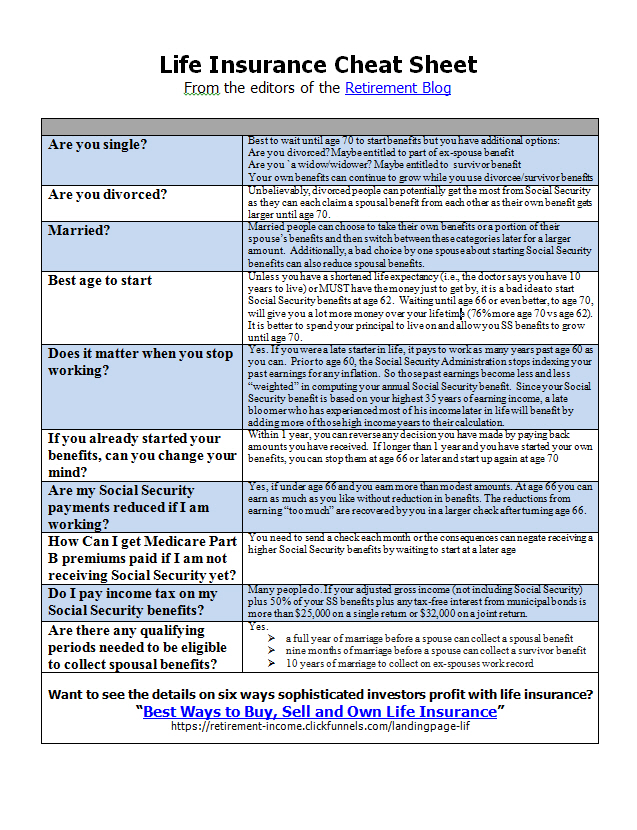Estate planning trusts play a big part in estate planning. What you don't know about them can hurt you and your beneficiaries' financial health and possibly your own.
What is a Trust?

A trust is a legal entity - just like a corporation or a person. It holds assets for a beneficiary. The beneficiary could be you or another person. A trust document states the purpose of the trust and how it's to be carried out. A trustee is a person (or entity) that carries it out. The grantor (e.g. you) creates and generally funds the trust. Trusts in estate planning play a major role as you shall see.
Estate planning trusts serves to separate legal and equitable title. In plain English, this means that a trust holds an asset (any asset like a house, car, or bank account) in the name of one person (called the Trustee), but that the asset is really for the benefit of someone else (called the beneficiary). Why have trusts and pursue trust planning?
The use of trusts gives flexibility and power in controlling how your assets are used if you become incapacitated or pass away or desire to control or protect your heirs. Let's say you want some of your assets to go to your son John. However, you know that John is financially irresponsible. You only want him to use ther funds for investment in real estate or a business. A trust is the only way to attach your instructions to the assets.
Different types of estate planning trusts can be created for all kinds of purposes, and you will hear terms like "Special Needs Trust", "Land Trust", and "Revocable Trust". Although you see that rusts have many different flavors, they are all the same in this regard:
- a legal document that establishes a legal entity (the trust)
- assets assigned to the trust
- a set of instructions
- a trustee responsible for carrying out the instructions
- a beneficiary who benefits from assets of the trust
Trust planning requires that you simply be precise about your desires and what you wish to accomplish so that you get accurate retirement help from a trust attorney who can draft the documents properly. Proper trust and estate planning can result in several benefits:
- reduction or elimination of estate taxes
- protection of assets from creditors and other parties
- management of assets for those who don't have the knowledge or ability to do so
- control of how your bequest is used after you're gone
- avoidance of probate
How Do Estate Planning Trusts Work?
Estate planning trusts are simply words on a piece of paper--words that are recognized by your State legal system as valid documentation of your desires. Note that rules regarding trusts are State rules. So if you have a trust prepared in one state and you move, have it reveiewed or create a fresh document.
The most common trust used in estate and trust planning is a revocable living trust, sometimes referred to as a revocable inter vivos trust.
Within the generic living trust are "sub parts" or flavors, such as A-B Trusts, Disclaimer Trusts, QTIP, and QDOT Trusts. Living trusts are the most flexible type of trust used in trust planning because the trust can be amended or revoked at any time by the competent trustor (the trustor is the creator of the trust- synonymous with grantor or settlor or you). Revocable living trusts are the most basic type of trust and often acts as the starting point for estate and trust planning.
Typically, you will be the initial trustee (e.g. person who controls the assets in the trust) of your trust and you will name successor trustees to manage and control your assets when you are unable or after you pass. As long as you are living and have the mental and physical capacity to act as trustee, you will continue to do so and have full control over all of your assets as you would without a trust including spending, moving assets around, buying and selling real property and investments.
At the time you become incapacitated or upon your death, the named successor trustee (usually a family member but often an attorney or CPA) will gather your assets, pay valid debts, claims and taxes and distribute your assets according to your wishes as directed in your trust. Selecting a knowledgeable successor trustee is a critical issue in trust planning as you want someone who will make good business decisions to settle your estate.
Although any of the estate planning trusts allows assets to pass without probate (which can be lengthy and costly court process), a complete estate plan includes a pour-over will, as a safety mechanism to move any assets into the trust that may have accidentally been left out. A will is also necessary to name guardians for any surviving minor children. Even in the process of trust planning, wills are used.
Estate planning trusts can contain provisions that can reduce or eliminate estate taxes (by divisions of an estate into parts) and a trust permits you to specify conditions for the distribution of your assets. However, in 2018 estate taxes are not a major issue as each person may pass along $5.6 million of assets to the next generation without estate taxes. Congress changes estate tax rules frequently so the exemption amount of $5.6 million could return to the $675,000 whiach stood for many prior years.
A living trust does not require a separate tax return during your lifetime, but other types of trusts which are irrevocable are separate financial entities and will have their own taxpayer ID and complete a tax return. While trust planning may sound complex, it is a common and straight forward process when done by an attorney experienced with estate planning trusts.
Typically, trust planning is an arena of financial planning that does not lend it self to tools like a retirement income calculator, financial planning software or monte carlo simulations as this planning is very individualized and is qualitative vs quantitative in nature.
Benefits of Estate Planning Trusts

The legal separateness of an irrevocable trust allows key benefits. First, that the grantor (e.g., you) determines how the assets he puts in it are to be handled and distributed to his assigned trust beneficiaries – according to how he writes up the rules of the trust document.
Second, the trust as a separate entity, can survive him indefinitely allowing his wishes to continue beyond his death.
Third, the beneficiary (e.g. your children), the object of the trust, benefits from the trust.
Last, the trust's legally protected from others (i.e, creditors) who may try to invade it or take the trust assets. Trusts in estate planning play these four major roles as just explained.
Estate planning trusts and concerns include:
- transferring wealth to your spouse, children and grandchildren
- minimizing estate taxes
- making provision for a helpless child
- making provisions for your own incapacity
- maintaining privacy
- protecting assets
- giving to charity
To address these concerns effectively, you often need an entity other than you or your spouse to hold assets, distribute money correctly, and carry out your wishes when you no longer can. That entity is a trust (the most common type of trust being a living trust).
Types of Trusts

Estate planning trusts can be revocable or irrevocable. Revocable means that the grantor (e.g. you) can decide to revoke the trust and take all the assets back for his use. In fact, such a revocable trust is really an extension of the grantor and seen by IRS as if all the trust assets and their income were his. The most well known type of revocable trust is the living trust.
During your lifetime, this trust is transparent--it does not affect anything. But upon death, the living trust contains a set of instructions that states how assets are to be divided. As you see, the use of trusts and estate planning go hand in hand. Because of the interrelationship of estate planning trusts and retirement planning, it is a good idea to have single retirement planner assist with the overall strategy.
Revocable trusts serve to avoid probate. Probate – the court process of transferring assets in a deceased's name by will or intestate - is a very public process. Trusts are not subject to probate – being a separate entity from the deceased – and can privately pass assets according to the terms of the trust. One of the objectives of estate planning trusts is to retain privacy. The additional benefit of a revocable trust is that it allows the grantor to control the assets and income of the trust as he wishes while he's alive.
Don't Get a Revocable Living Trust for the Wrong Reason
A revocable living trust can be a useful tool to help you reduce estate settlement costs and to retain control over your assets while you are living. It is the most common and easily self-prpared of the estate planning trusts. The benefits of an revocable living trust will vary from person to person. In other words, it is not for everyone.
An revocable living trust allows you to transfer your property to a trustee with instructions to hold the assets as specified within the trust for the benefit of the beneficiaries. The trust agreement often covers three important time periods.
The first part covers the time that you are alive and competent. In most cases, you would be the sole beneficiary and sole trustee. You'd have complete control over the property, including the authority to remove all of the trust's assets and the ability to revoke the trust at any time, for any reason.
Part two stipulates that if you become incapacitated, a successor trustee that you have named in the trust will take over to manage the assets for you. You will, however, remain the sole beneficiary. This section will eliminate the need for your family to go to court to seek guardianship over your finances in the event you are unable to manage those funds on your own.
Finally, the third part directs the disposition of the trust's assets after you die.
Assets in a revocable living trust avoid probate, thereby reducing transfer costs for your heirs. A revocable living trust can also keep your affairs private since they are not a matter of public record. As probate costs can often reduce an estate by as much as 4-10%, significant costs can sometimes be saved using an revocable living trust. However, if the trust is unfunded, your assets will still go through probate.
There are also other ways to avoid probate. Joint ownership property can avoid probate as well as any accounts where you have named a beneficiary, such as IRAs, life insurance policies, and annuities.
As previously mentioned, a revocable living trust will not help you save on probate expenses if the trust is not funded. Bank accounts and funds held with your brokerage firm must be transferred by signing forms at your bank and by providing them with a copy of the trust agreement. With real estate, you will often have to file new deeds with your municipality.
Revocable living trusts have helped many seniors and their families better manage their finances but not everyone needs it. So before you spend the money, make sure you know what you hope to accomplish.
An irrevocable trust –once created by the grantor – is no longer under his control. It's controlled solely by the trust document and the trustee. In this case, it's taxed as a separate entity –unlike the revocable trust – and has an existence all its own. In our tax system, whoever has the ability to control an entity is taxed and responsible for what that entity does.
The irrevocable nature of a trust breaks that connection relieving the grantor of any subsequent tax or control issues. However, in reality, the trustee of the irrevocable is usually a friend, relative or confidant of the grantor over which the grantor has influence and thus, can still exert indirect control over trusts assets. In this case trusts and estate planning serve to separate control (which the grantor still exerts) from ownership. Assets are removed from the grantor's estate with favorable estate tax and asset protection consequences.
The use of trusts in estate planning have a clear objective to achieve. Examples of such trusts are:
o Spendthrift protection
o Charitable trust
o Life insurance trusts
o Asset protection trusts
o Bypass Trusts
o Qualified Personal Residence Trust (QPRT)
o Qualified Terminal Interest Property Trust (QTIP)
o Generation-Skipping Trust
o Irrevocable Life Insurance Trust ILIT
You may recognize the term "blind trust" which politicians are to use when in office. The idea is that the politician cannot control personal assets over which he can impact with legislation. ASs explained in the above paragrpah, these trusts are not really blind as the trustee who controls the trust assets is ussually a confidant of the politician.
Estate planning trusts, while seemingly complex, become easier to understand when you focus on the primary objectives of trusts--reduced taxation and creditor protection.
The table lists some common estate planning trusts and their purposes.
| Trust name | Purpose | Inter vivos or testamentary | Why a trust? |
| Living Trust | Avoid probate | Inter vivos
revocable |
Need entity other than person for privacy |
| Living trust | Handle property through trustee | Inter vivos revocable | Allows trustee to take over if grantor unable or dead |
| Medicaid trust | To receive assets 5 years prior to applying for Medicaid | Inter vivos irrevocable | Medicaid patient can't own or control assets to qualify for Medicaid |
| ILIT (intervivos Life Insurance Trust) | To own life insurance on person with benefit to nonestate beneficiaries | Inter vivos irrevocable | If person own's life insurance, its proceeds go to his estate at his death |
| Charitable Remainder or Lead Trusts | To give to charity for deduction benefits and still benefit donor for living expense or beneficiaries at death | Inter vivos irrevocable | Need trust to hold assets and fulfill government obligations for tax deductions |
| By-pass trust (credit shelter trust) | To hold assets for estate exemption of deceased; earning can be used for spouse | Testamentary | Protects the deceased's estate tax exemption |
| Supplemental Needs Trust | To hold assets for disabled child on Medicaid for nonsupport help | Testamentary | Child can't control assets or will lose Medicaid assistance |
A New Type of Trust May be Able to Solve Many Estate Planning Problems

Many wealthy Americans today are worried about what will happen to their estates after they are gone. Although many different types of trusts have been designed to help alleviate this problem, a new type of trust, called the 'inheritor's trust' has a level of flexibility that is unmatched by other estate planning vehicles. This type of trust is a dynasty trust, similar to many other types of dynasty trusts, except that this trust is a 'stand alone' trust that allows for changes in investment strategies, as long as the beneficiary is willing to discuss the situation with his or her grantors.
A dynasty trust is one tool among estate planning trusts for the well to do. Dynasty trusts are multi-generational trusts created specifically for descendants of all generations. Dynasty trusts can survive 21 years beyond the death of the last beneficiary alive when the trust was written. Assume that wealthy Mr. Henderson uses this estate planning strategy at age 80. He has a new born grandson. Assuming the grandson lives to age 90, the trust would continue for 111 years. This trust could provide retirement income for several generations.
This type of trust can potentially provide substantial benefits for those seeking long-term, multi-generational planning, such as the type designed to avoid the generation-skipping transfer tax. It can also protect against divorce, creditors and estate taxes as all assets in the trust are immune to liabilities of the trust beneficiaries (this is a basic estate planning strategy--place assets in trust for protection from creditors).
Any parent that is currently gifting assets to their children on any kind of regular basis should seriously consider establishing one of these trusts. The key difference between this type of trust and other trusts is that the beneficiaries must be willing to talk openly with their grantors regarding how they want the money invested or handled.
In order to establish an inheritor's trust, an irrevocable dynasty trust must be established first. The inheritor is more often than not the trustee, and must usually choose a close friend or confidant to be the distribution trustee so that the trustee willingly makes distributions for supplemental retirement income to the beneficiary.
This trustee has absolute control over what kind of distributions are made from income and principal. However, this transference to a third-party trustee is exactly what makes the assets of the trust so secure from creditors. Beneficiaries have absolutely no legal right to force any kind of distribution from the trust, which renders creditors unable to force any type of distribution from the trust as well. It is important to select the correct state to create the trust in, as the validity of these trusts will vary according to state law.
If you are worried about your estate tax situation or whether your beneficiaries will be able to do what they want with your assets once you are gone, contact experience legal counsel for the right estate planning strategy. The legal system provides many tools for sophisticated estate planning trusts but do people use them?
Less Need for Life Insurance Trusts

A life insurance trust is a special type of trust that holds title to a life insurance policy. In many cases, the primary purpose of this trust is to help certain taxpayers reduce their federal estate tax burdens. While in 2018, estate exceeding $5.6 million are exempt from estate taxes so few need to worry, now. But as stated above, the estate tax exemption can easily be changed by Congress.
For many years, the estate tax exemption was only $675,000. In the absence of a trust, any insurance policy that you own personally is included in your gross estate. As a result of this, the death benefits from the policy would be included in your estate and could be subject to federal estate taxes. So when the estate exemption was only $675,000, a person with a $1 million life insurance policy would immediately create estate taxes due at death.
On the other hand, by purchasing the life insurance policy through a trust, you can keep the death benefits out of your estate. This can potentially result in a significant tax savings.
Notwithstanding the tax benefits of these arrangements, these trusts can also facilitate your estate planning in other ways too. For example, you might decide that the needs of your beneficiaries are better served by allowing an experienced trustee to manage the policy proceeds in the trust.
In this situation, your trust’s beneficiaries can receive the income generated from the proceeds when the trust receives it. As an example, say you have a life insurance trust hilding a $1 million policy. Upon your death, the trust gets the $1 million, tax free. Your instrucitons may be to presrevr that $1 million indeopfintiely and sdistribute $50,000 annually to beneficiaries for as long ass they live. At no time do you want them to have access to the $1 million.
Unfortunately, many beneficiaries are not equipped to make sound investment decisions, especially those who are minors, disabled, or are not otherwise capable of managing money. These beneficiaries in particular would benefit from this sort of arrangement. Of course, the trust can also be structured in a manner that requires the policy proceeds to be distributed to the beneficiaries immediately, or when they reach a certain prescribed age.
Notwithstanding the potential planning benefits, a few cautionary planning points must be observed. First, to prevent the policy proceeds from being placed in your estate, the arrangement must be structured as an irrevocable trust. This means that the trust cannot be revoked once is funded. A small exception, however, might apply in the event that all beneficiaries were willing to agree to the revocation.
Also, the trust grantor (i.e., the person who establishes the trust) cannot retain any incidents of ownership in the policy. This means that the grantor cannot change the policy's beneficiary. It is also commonly understood that the grantor should not serve as the trustee.
Additionally, if the grantor borrows against the policy, then the grantor is considered the owner of the policy for federal estate tax purposes. As a result, the proceeds from the policy will be included in the grantor’s estate and could be subject to the federal estate taxes.
Most of us realize that life insurance can be a great way to provide for our loved ones' future when we are gone. Additionally, by taking an additional planning step in having the policy owned by a trust, you are potentially maximizing all the benefits that a life insurance policy offers. However, you will need a trusted legal professional to make sure it is done right!
Give a Crummey Gift and to Fund a Life Insurance Trust
We can use trusts to contribute funds to our beneficiaries after we die. But contributing assets to trusts is a gift to its beneficiaries for their future use. Unfortunately, the IRS says that only gifts of present value qualify for the annual gift tax exclusion (in 2018, $15,000 per donee per year). "Present value" means that the gift must be immediately available to the beneficiary. Here is a way to get the exclusion even when making a gift that will not currently provide its benefit.
Clifford Crummey wanted to build a trust fund for his sons and was able to get the yearly gift tax exclusion. He won that right in court because he gave his sons an opportunity each year to take their share of what he contributed to the fund (i.e. the sons had a limited window of time to take the cash). This way the gift was indeed of present value as it was immediately available to the beneficiaries. Whether the sons actually took the gift then– or let it sit in the trust - was deemed immaterial for IRS.
So as long as the beneficiary has a right–referred to as a Crummey power–to demand his share of the yearly gift to a trust, the donor of the fund can claim the annual gift tax exclusion. This Crummey power has since been expanded to beneficiaries of many other types of trusts as well.
Operationally, a donor makes a contribution to an irrevocable trust. He notifies the beneficiary that he or she can withdraw their share of the funds for a specific window of time–but not less than 30 days. The donor lets the beneficiary know that this is the Crummey power provision so that the beneficiary generally declines to withdraw the gift when given the opportunity. This provision enables a person’s gift to be eligible for the gift-tax exclusion. The beneficiary generally complies with this arrangement to waive their Crummey power and leave the money in the trust.
Use a QTIP Trust to Give Your House to Your 'First Marriage' Children But After Your Second Spouse Dies

Divorce is prevalent in society. Older couples married for the second time often have their own children from a first marriage. Each wants to bequest things to their own children. Each in the couple may have his (her) own assets but one main asset might be owned by one of them. More often than not, that’s the house they’re living in. How can that house owner assure that his house goes to his children of a previous marriage while making sure his present spouse will always have their house to live in? In a moment, we'll see that the QTIP trust is the answer.
With the automatic way probate laws work, the spouse who dies earlier may lose all control of where his assets end up. Present spouses may not be on good terms with their spouse’s children. So, spousal promises to carry out wishes may wear thin as the years pass beyond a spouse’s death.
There is one device, though, by which a spouse can assure that his house will pass to his own children but after his present spouse dies. And that’s called the qualified terminal interest property trust (QTIP). He simply creates the QTIP trust making his own children the ultimate beneficiaries of it. His spouse benefits while she lives but her interest in it is terminated at her death.
The house-owning spouse funds the QTIP trust with assets that qualify for the unlimited marital deduction. This would include the house as well as anything else he chooses. Any income that is generated in the trust must be paid to his surviving spouse – and only to her or else the marital deduction (i.e. what is put into the QTIP trust) would be disallowed. Use of the house would obviously be the surviving spouse’s right in this regard too.
Finally at the surviving spouse’s death, the assets in the trust (i.e. the house) are considered part of her estate for purposes of calculating any estate tax that may be due upon her death. Nevertheless, all QTIP trust assets are paid to his children.
Because the QTIP trust assets are part of the surviving spouse’s estate, they get a step-up tax basis. This means their tax basis immediately jumps from what it was previously to their fair market value on the surviving spouse’s date of death. If the children decided to sell the house upon receipt of it, they’d have no capital gains tax on it because the tax basis would then be equal to it sales price.
Lastly, since the QTIP is a trust, it bypasses probate at the surviving spouse death.
Achieve a Second Step-up in Cost Basis With a Credit Shelter Trust
For many affluent investors, avoiding income and estate taxes is a major concern. Large estates that are left unprotected can face estate tax bills of up to 60% of their value. Fortunately, there are many things that can be done to reduce--or even eliminate--estate tax liability that involve establishing trusts and purchasing life insurance.
Married couples who have assets that have substantially appreciated over time can save big dollars on their estate tax bills by establishing a credit shelter trust.
Assets left to a credit shelter truist will receive a “step-up” in basis upon the death of the first spouse; which means that none of the appreciation of the assets up to the time that they are placed in the trust will be taxed. Then the surviving spouse will immediately (before the assets appreciate any further) sell a portion of the assets in the trust, and use the proceeds to buy a life insurance policy on him or herself with the trust as the beneficiary.
Therefore, when the surviving spouse passes away, the trust will receive the entire death benefit, with no tax liability. For all practical purposes, the assets of the trust that were received from the first spouse to die grew to the amount of the life insurance death benefit of the surviving spouse upon his or her death.
As an example, consider Joe and Betty Smith, a hypothetical wealthy couple with about $12 million in assets. Joe is the majority shareholder in his family business, and will most likely be outlived by his wife. Joe and Betty set up a credit shelter trust. Joe eventually dies and transfers $2 million of his company stock into the trust. Betty uses $250,000 of it to purchase a $2 million single-premium life insurance policy on herself. When she dies, the death benefit will join Joe’s stock in the trust and pass to their heirs tax-free. It can be said that Joe’s $1.75 million in remaining assets grew by another $2 million through the purchase of life insurance.
Protect Your Disabled Heirs With Special Needs and Payback Trusts
If you or a loved one has a child or other heir that is mentally or physically disabled, then you may have major concerns about how to provide for that person once you are gone. Statistically, the odds of becoming disabled are much greater than the chance of an untimely death. Furthermore, the financial impact of disability can be far more devastating than death, as someone who is incapacitated will continue to require ongoing care for the duration of the disability.
Estate planning trusts can help plan for this unpleasant contingency, specifically, a special needs trust. This type of trust is similar to most other trusts in many respects, and is almost always used in conjunction with Supplemental Social Security income and Medicaid. Therefore, one of the main functions of the trust is to ensure that the funds it pays out do not coincide with benefits that are paid from the public sector. The assets of this trust also cannot exceed a specified amount, or the trust becomes defective.
Generally, estate planning trusts for special needs can be funded with the same types of assets as most other trusts, such as cash, stocks and bonds, mutual funds, personal property, real estate and even life insurance. Cash value life insurance is in fact often used to fund these trusts, as many donors are not able to adequately provide financial support by any other means once they are gone. Annuities are also often used as an alternative investment if the grantor/donor is uninsurable.
Another type of irrevocable trust, called a “payback” trust, offers the ability to bypass the standard Medicaid rules; excluding benefits for those who had assets transferred to them any time in the 60 months before application. There is an exception written into the laws stating that any disabled person under age 65 can remain eligible for Medicaid as long as they transfer their assets to this type of trust. However, the law also mandates that upon the death of the disabled beneficiary, any remaining assets in the trust revert back to the state. This aspect of the trust differs from the special needs trust, which may have a remainder beneficiary.
Funeral insurance trusts
When you die, funeral decisions and payments come first and fast. Will these issues be handled by you now or by your loved ones after you pass? And, where will the money come from? Many seniors are making their funeral decisions and payments now to minimize the stress and anxiety it may cause their loved ones. The last thing you want to do is be a burden on your family for funeral arrangements and it's easy to make simple plans with estate planning trusts.
Let's look at some prepayment options and benefits.
Your options for prepaying the cost of your funeral are three:
- Buy funeral insurance.
- Make a prepaid agreement with your funeral home's director.
- Set up a funeral trust.
You might consider buying a small-term life insurance policy to cover burial expenses if you think it might be difficult to pay the $5,000 to $10,000 cost of a funeral. Funeral insurance is insurance intended to cover the cost of funeral expenses. It usually has a low face value, normally less than $10,000. The value of the policy is determined by the anticipated total funeral expenses at the time of death; although some final expenses, such as cemetery property, can be prepaid and need not necessarily be included in the policy.
Prepaid funeral agreement
You arrange with the director of your funeral home of choice to prepay your funeral costs. You will get to pick out just what items you wish to pay for and for how much. Be sure when the agreement is signed by both you and the director that you have a clear statement of the funeral goods and services you are prepaying. Your prepayment should specify where your money is deposited–either in an interest-bearing trust account or a funeral insurance policy with either designated in your name.
Set up a funeral trust
This can be simple legal document, similar to what many funeral homes use when having an individual pre-pay for services. A key selling point behind the trusts is the fear that your funeral home may go out of business. Another is that the trust provides flexibility in picking a service provider, so that the family is not locked into using a certain funeral home.
Impact on Medicaid benefits
A key issue behind funeral planning is the need for long-term medical care and the desire to shield some assets from nursing homes or Medicaid. Not only is there a way for an individual to set aside money for a funeral, but money used for that purpose "beats the clock". i.e., where most assets must be moved out of an individual's name and/or accounts well in advance of needing long-term care; funeral money can come out on the eve of moving into the nursing home and just before needing Medicaid.
Would Your Survivors Spend It All--the Spendthrift Trust
 Like most seniors, you have worked hard to get where you are financially, and you want to make sure that your heirs receive everything that you plan to leave them. To accomplish this, you may have even established a trust to reduce transfer costs and possibly shelter taxes. But what will happen once your loved ones receive their inheritance? Can you use extate planning trusts to insure they don't waste their inheritance?
Like most seniors, you have worked hard to get where you are financially, and you want to make sure that your heirs receive everything that you plan to leave them. To accomplish this, you may have even established a trust to reduce transfer costs and possibly shelter taxes. But what will happen once your loved ones receive their inheritance? Can you use extate planning trusts to insure they don't waste their inheritance?
Will they invest it wisely for the future, quickly spend it all, or will angry creditors line up at their door to get paid? An additional special clause within your trust may possibly assure that the assets that you pass to your beneficiaries will last as long as you had wished.
A spendthrift clause (or separate spendthrift trust) prevents trust beneficiaries from voluntarily or involuntarily transferring current or future rights in the trust. Without this, beneficiaries have unrestricted ability to use the assets, and thus their creditors can attack those funds. State laws determine the exact language and the degree of creditor protection spendthrift trusts offer. Nevertheless, the concept restricts the beneficiaries' access to the trust's property.
The trustee whom you select is usually given the discretion to distribute money as needed to the beneficiaries. This may be an ideal choice for a beneficiary who is financially irresponsible, and likes to spend, or you may want to provide for a loved one who has special physical or mental needs.
Grantor Retained Annuity Trust--for those with a large estate
If you expect to have an estate large enough to be taxable, transfer some wealth while living in a manner that triggers little or no gift tax and have your family enjoy the benefits of one of the more powerful etstate planning trusts. You may use a grantor retained annuity trust (GRAT) to achieve exactly that. A GRAT is an irrevocable trust setup for just particular term of years and made to move the appreciation on assets contributed to it with little or no gift-tax implications.
It is important to know this fundamental estate tax planning concept: IRS views each financial resource as having 2 components: the value today and also the long term value. You can split any asset into those two parts for estate tax planning and that is the aim of the GRAT.
You fund your GRAT, receive back annuity payments from it during its term, and what ever is left in the GRAT at the end of its period is now out of your 'estate' which will go to your designated beneficiaries (or a holding trust) gift tax free. In case you die during the term, though, the funds go to your beneficiaries yet stays in your 'estate' for estate and gift tax purposes . The concept here is that any appreciation on the asset happens out of your estate for estate tax planning.
How do you steer clear of gift tax for funding the GRAT?
The IRS assigns an interest rate that a trust is anticipated to earn during the time of its funding. The gift worth is set equal to the preliminary contribution to the GRAT along with a theoretical interest earned on the principal without the annuity payments that would be produced through the end of the period. So if you assign this particular IRS rate to find out your annuity payments, than the net gift you have produced to your GRAT may be 'zero' - great estate tax planning!
What you fund your GRAT with would appear to qualify like a gift subject to gift tax. However since the GRAT returns to you annuity payments made up of these funds and some of their income over the term of the trust, the precise gift is your funding amount less the present worth of these annuity payments.
Instance:
You deposit $1 million in your GRAT
The GRAT is to pay you $50,000 yearly for twenty years
The present value of those payments is $682,000
Therefore, you've produced a gift not of $1 million but of $318,000 ($1 million less $682,000)
Obviously in case your GRAT funds only earned the IRS rate, you'd deplete your GRAT at the end of its term leaving nothing for your beneficiaries. So, you're planning on GRAT investments to develop at a substantially greater rate compared to the designated IRS rate of earnings. And that is why a reduced rate of interest environment - as in a economic downturn - with the anticipated recovery throughout the GRAT term makes it a very low or zero gift tax savings transfer vehicle.
Note that since the GRAT is a grantor trust, you must pay out income tax on all taxable trust earnings throughout its time period. However having to pay these taxes does not constitute additional gifts to the GRAT.
No matter what you deisre to happen to your assets, your wishes can always be accomplished with estate planning trusts.


Leave a Reply